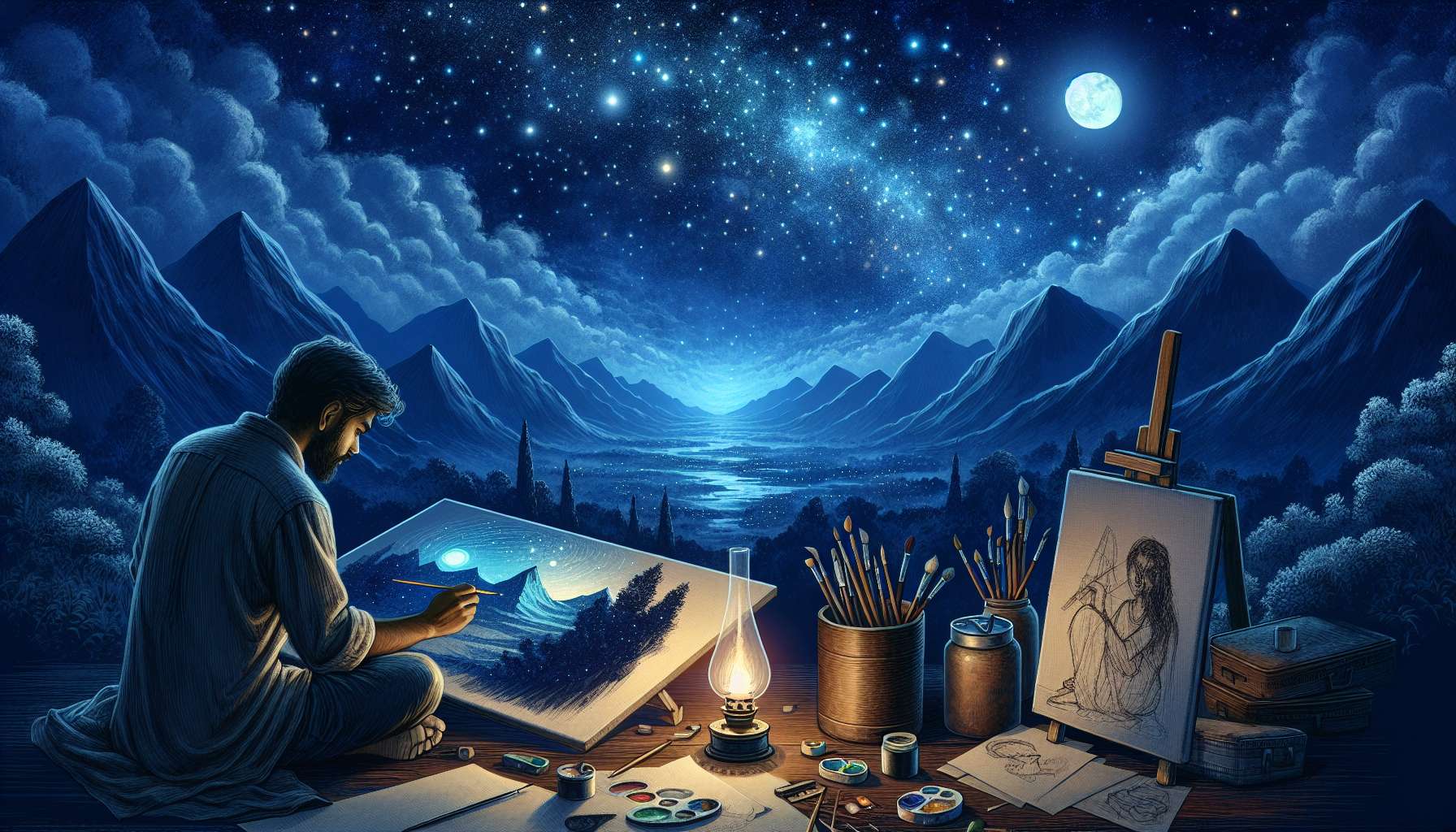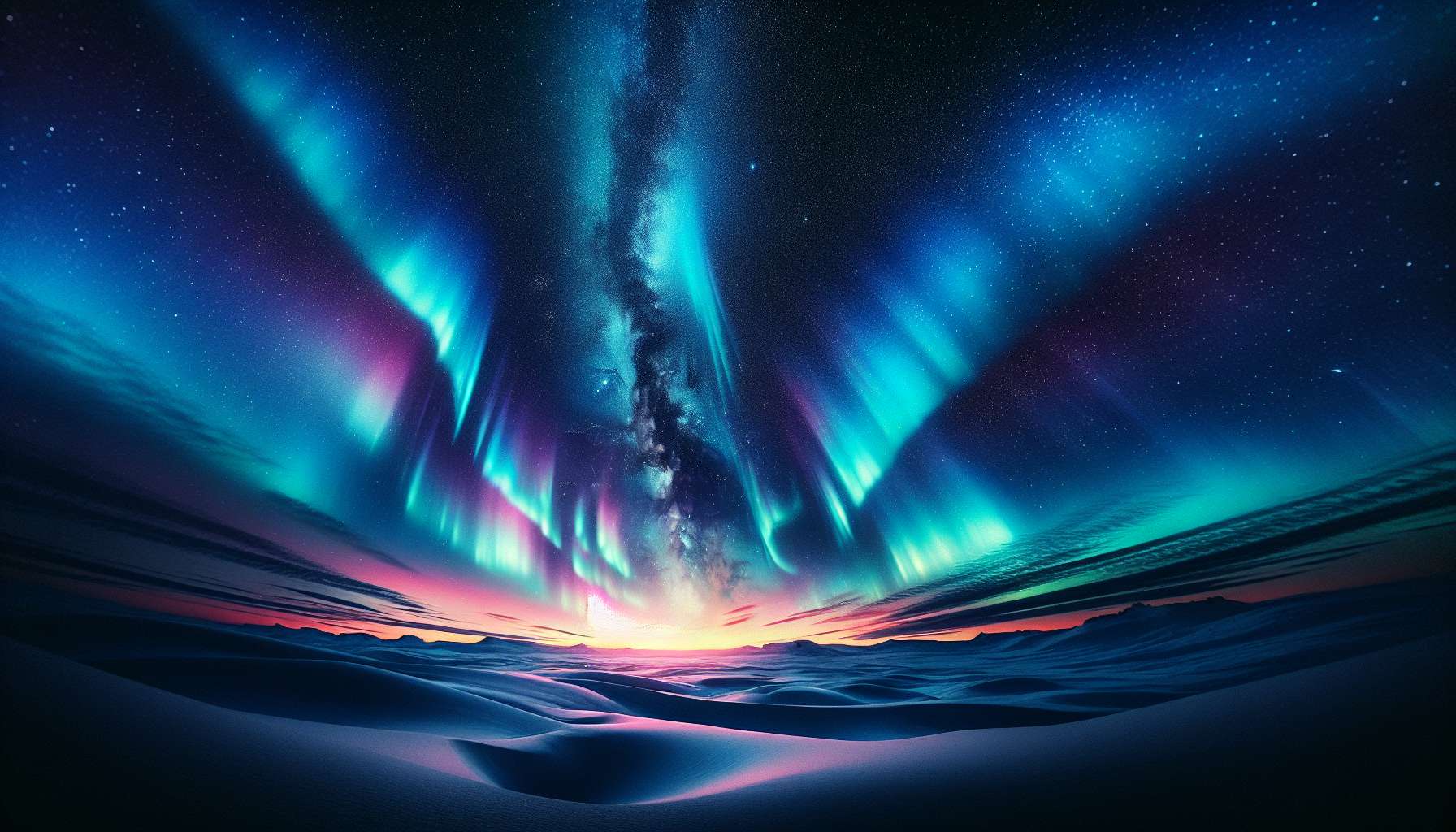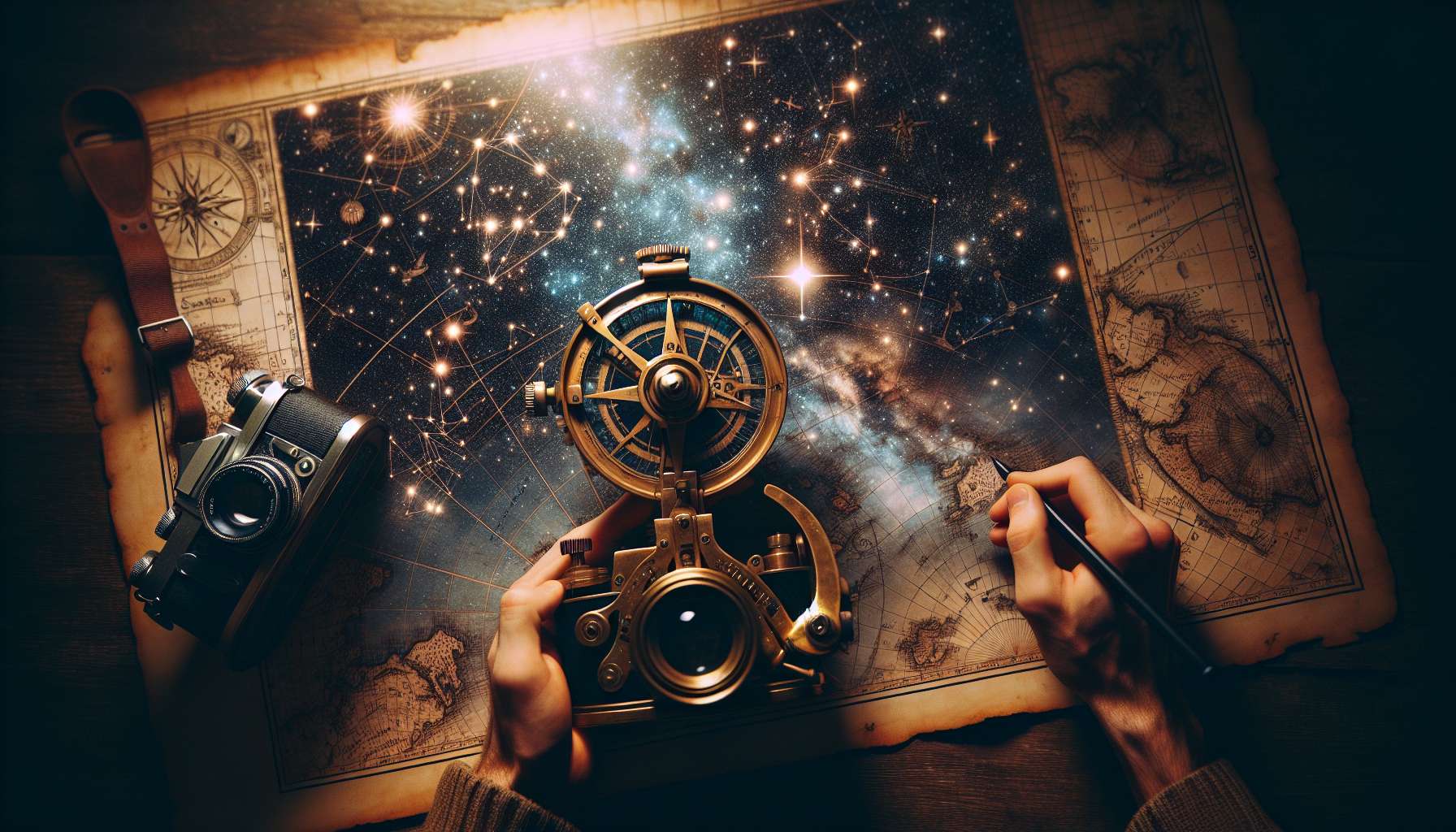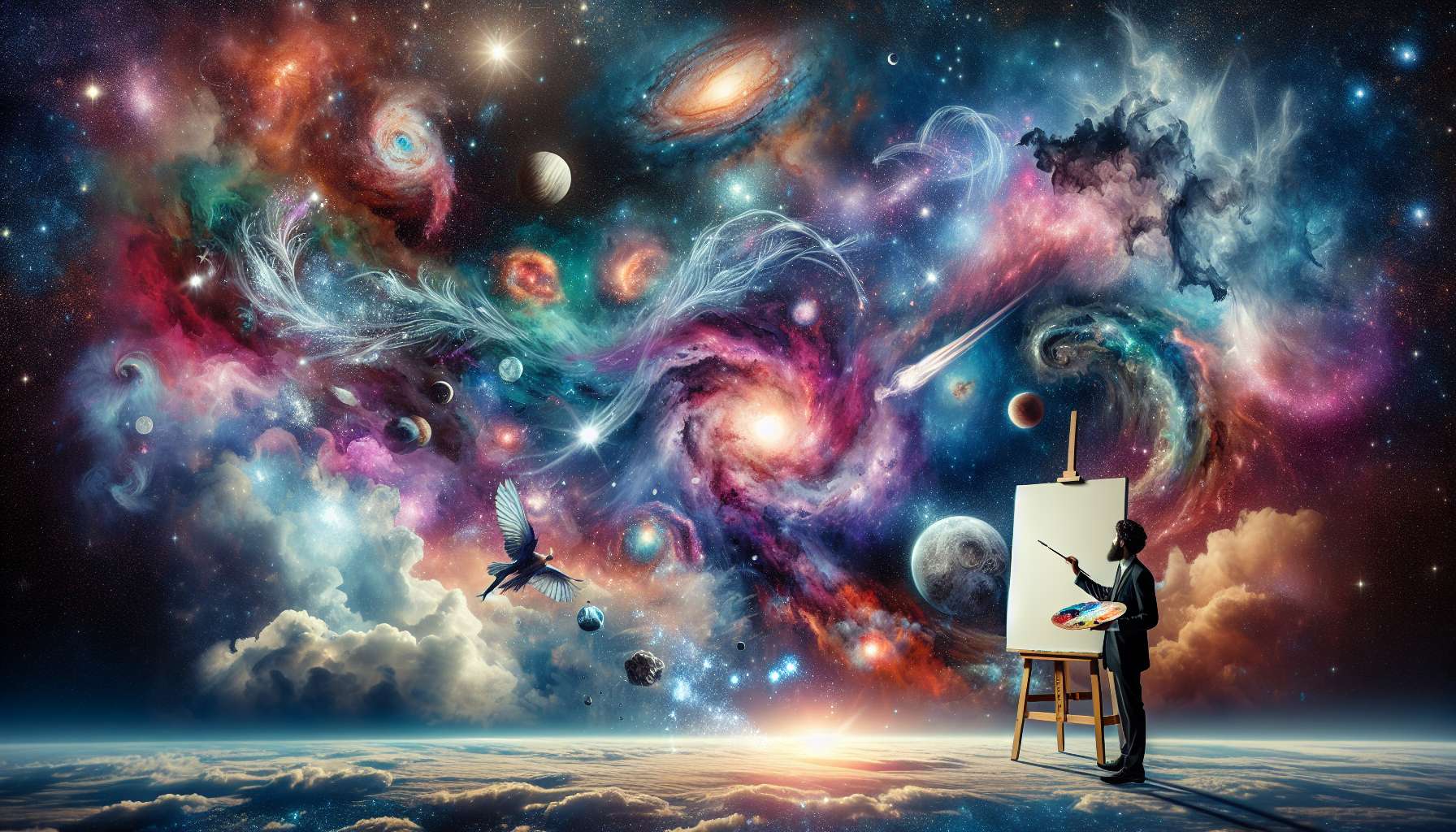Midnight Musings in Art: Exploring Creativity Under the Cover of Darkness
Have you ever found yourself awake in the dead of night, your mind swirling with thoughts and ideas that seem to come alive in the darkness? This phenomenon, known as ‘Midnight Musings’, has long been a source of inspiration for artists across the globe. In those quiet hours, when the rest of the world is asleep, creativity often flourishes, giving rise to some of the most profound and poignant works of art.
But what is it about the late hours of the night that sparks such creativity? How do artists harness the power of darkness to fuel their imagination and bring their visions to life? In this article, we will delve deep into the world of ‘Midnight Musings in Art‘, exploring its history, significance, and impact on the creative process.
The History of Midnight Musings
The concept of ‘Midnight Musings’ is not a new phenomenon. Throughout history, artists have been known to work late into the night, drawing inspiration from the stillness and solitude that the darkness brings. One of the most famous examples of this is Vincent van Gogh, who famously painted his iconic ‘Starry Night’ while staying at the Saint-Paul-de-Mausole asylum in France.
Other notable artists, such as Pablo Picasso and Georgia O’Keeffe, have also been known to work late into the night, using the cover of darkness to explore new ideas and push the boundaries of their creativity. In many ways, the night has always been a time of inspiration and introspection for artists, allowing them to tap into their subconscious and bring forth works of art that are truly transformative.
The Significance of Midnight Musings
So why is it that so many artists find inspiration in the late hours of the night? One theory is that the darkness allows for greater focus and concentration, free from the distractions of the outside world. In the silence of the night, artists can truly immerse themselves in their work, letting their ideas flow freely and uninhibited.
Additionally, the nighttime has long been associated with mystery and magic, with many artists finding the darkness to be a source of endless possibilities and creative energy. The cover of night can also evoke a sense of melancholy or introspection, leading artists to explore deeper themes and emotions in their work.
Furthermore, the physiological effects of sleep deprivation can also play a role in sparking creativity. Research has shown that sleep deprivation can lead to increased activity in the brain’s frontal lobe, the area responsible for creative thinking and problem-solving. This heightened brain activity can lead to more innovative ideas and novel approaches to artistic expression.
Case Studies: Artists Who Thrive at Midnight
There are countless examples of artists who have found success and inspiration in the late hours of the night. One such artist is Marina Abramovi, a performance artist known for her intense and often controversial work. Abramovi has spoken openly about her preference for working at night, citing the quiet and stillness as key factors in her creative process.
Another artist who is no stranger to the midnight hour is David Lynch, the visionary filmmaker behind cult classics such as ‘Twin Peaks’ and ‘Mulholland Drive’. Lynch is known for his surreal and dreamlike aesthetic, which he attributes in part to his late-night writing sessions. In an interview, Lynch once said, “There’s something about the night that’s magic, and you don’t want it to end.”
These case studies serve as a testament to the power of ‘Midnight Musings’ in fueling creativity and driving artistic innovation. By embracing the darkness and allowing their ideas to flow freely, these artists have been able to create works that are truly timeless and transcendent.
The Future of Midnight Musings
As we move further into the digital age, the boundaries between day and night are becoming increasingly blurred. With the rise of remote work and flexible schedules, many artists are finding themselves working at all hours of the day and night, blurring the lines between work and rest.
However, this shift in working patterns also presents new opportunities for creativity and exploration. With the ability to work from anywhere at any time, artists have more freedom than ever to tap into their creative energy whenever inspiration strikes. The night, once seen as a time of solitude and reflection, is now a time of limitless potential and possibility.
Additionally, advancements in technology have opened up new avenues for artistic expression, allowing artists to create and collaborate in ways that were previously unimaginable. From digital art to virtual reality, artists are pushing the boundaries of what is possible, drawing inspiration from the world around them and the depths of their own minds.
Expert Opinions
According to renowned psychologist Dr. Carl Jung, “The creative mind plays with the objects it loves.” Jung believed that creativity was closely tied to the unconscious mind, and that by tapping into our deepest desires and fears, we could unlock a wellspring of creativity that was truly transformative.
Similarly, artist and philosopher Jean-Paul Sartre once said, “In order to be an artist, one must be disturbed.” Sartre believed that true artistry came from a place of discomfort and unrest, pushing the artist to explore new ideas and challenge the status quo.
Common Misconceptions
One common misconception about ‘Midnight Musings’ is that it only applies to visual artists, such as painters and sculptors. In reality, artists of all disciplines can benefit from working late into the night, whether they are writers, musicians, or filmmakers. The cover of darkness can be a source of inspiration for anyone seeking to tap into their creative energy and push the boundaries of their art.
Another misconception is that ‘Midnight Musings’ are only beneficial for creating melancholic or introspective works. While it is true that the night can evoke a sense of introspection and reflection, it can also be a time of joy, excitement, and inspiration. Artists are free to explore a wide range of emotions and themes in their work, drawing from the full spectrum of human experience.
Conclusion
To wrap things up, ‘Midnight Musings in Art’ is a powerful and transformative force that has fueled the creativity of artists for centuries. From the quiet solitude of the night to the limitless possibilities of the digital age, artists continue to draw inspiration from the darkness, creating works that are truly timeless and transcendent.
As we move forward into an increasingly connected and fast-paced world, it is more important than ever to embrace the power of ‘Midnight Musings’ and allow our creativity to flourish in the stillness of the night. By tapping into our deepest desires and fears, we can unlock a wellspring of creativity that has the potential to change the world.
So the next time you find yourself awake in the darkness, let your mind wander and your ideas flow freely. Who knows what masterpiece you might create in the quiet hours of the night?




